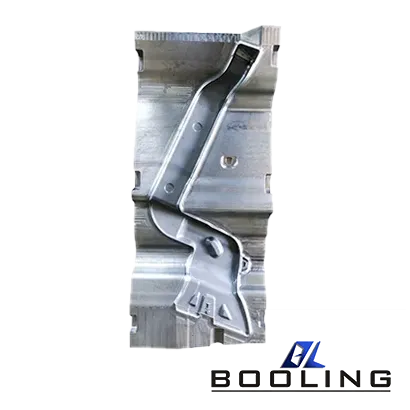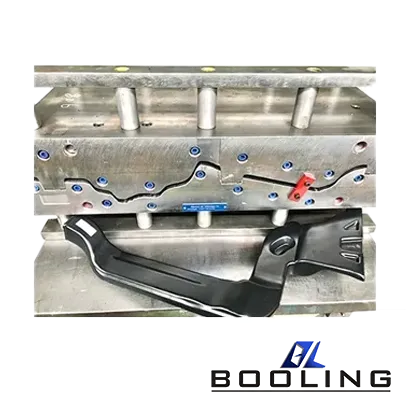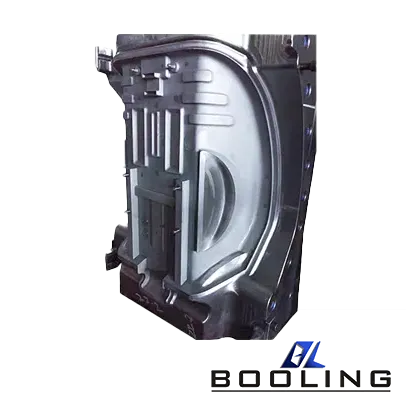Home > ABS Blow Molding Processing Service
3D Blow Molding
3D blow molding technology allows for higher precision and manufacturing efficiency on some blow molded parts, enabling highly customized workpieces to meet different applications and usage scenarios, ensuring high-quality production in large batches.

The process principle of ABS blow molding mainly includes: extruding or injecting molded blanks from plasticized and melted raw materials, then blowing them with compressed air to make them tightly adhere to the inner wall of the mold cavity, cooling and shaping them to obtain hollow products.
The ABS blow molding process is not always smooth sailing, and during this process, it is necessary to improve the quality of the final product by adjusting parameters, modifying ABS, or redesigning molds.

Reasons for the Need for Additives in ABS Blow Molding
In the process of ABS blow molding, certain additives are required. The main purpose of this step is to adjust and change the physical and chemical properties of ABS blow-molded products so that they can produce high-quality products more efficiently.
- Improve Appearance and Functionality
To avoid damage caused by static electricity during the processing and application of ABS blow molding materials, a type of additive substance with surface activity is often added during preparation to improve the surface function of composite materials. This type of additive includes anti-static agents and anti-fog agents.
- Improve the Appearance Quality
In the blow molding or preparation of ABS materials and their products, to improve the appearance quality of the materials and their products, a type of additive that can give the materials a bright appearance or give the products various colors is often added. These additives include coloring agents and lubricants.
- Improve Processing Functionality
During the preparation and blow molding process of ABS, some diluents are often added to improve the processing function of the material, such as fluidity and demolding. The addition of diluents can reduce the viscosity of the resin, improve the wetting ability of the adhesive to enhance the material, facilitate the transfer of energy released during the resin curing process, and appropriately extend the service life of the adhesive. The participation of lubricants can improve the lubricity between polymer molecules and between polymers and reinforcing materials, thereby improving the processability of ABS materials.
- Improve Mechanical Functionality
Regarding resin-based composite materials, to improve certain mechanical functions such as tensile strength, hardness, rigidity, impact strength, etc., additives that can improve mechanical functions can be added during ABS preparation and processing. Composite materials based on epoxy resin have high hardness and strength after cross-linking and curing, but poor resistance and weak impact resistance. To improve their impact resistance, additives that can enhance resistance can be added before the blow molding process.
- Flame Retardant Effect
The rapid expansion of ABS blow molding technology in aviation, automotive, construction, and electrical industries has led to an increasing demand for its flame retardant function. The resin-based material matrix is mostly composed of organic polymers made of flammable hydrocarbons. Therefore, in the process of ABS material blow molding, it is necessary to add a type of additive that can meet the certain flame retardant requirements of the composite material. This type of additive is commonly known as flame retardant.
- Stabilization Effect
ABS materials may undergo aging and significant functional degradation during preparation, storage, processing, and application. To avoid or delay their aging, a type of stabilizer, also known as an anti-aging agent, needs to be added during material preparation and processing. The use of this additive can extend the service life of the ABS blow molding process and make it more durable.

What Should Be Noted When Adding Additives to ABS
Attention should be paid to the dosage and material properties during the ABS blow molding process. The most commonly used additives currently include plasticizers, fillers, stabilizers, colorants, etc.
- Collaboration. The additives added simultaneously during the ABS blow molding process should have a synergistic effect and avoid mutual opposition and exclusion.
- Compatibility and Durability. Additives and resins, additives, and additives should be able to exist stably and uniformly in plastics for a long time, with minimal loss during use (such as volatilization and migration).
- Economy. With low usage and high cost-effectiveness, additives should be easily and long-term available in the market.
- Functionality. The selected additives should have high functional technical indicators. In addition, it should also meet the usage requirements of ABS blow molded containers, such as glossiness, transparency, hot filling performance, food hygiene, etc.

Addition of ABS Plasticizer
In ABS blow molding, adding an appropriate amount of plasticizer can greatly enhance the flexibility and plasticity of the raw materials, which can lead to better molding in subsequent processing.
Plasticizers refer to substances added to polymer systems that can increase the plasticity of the polymer system without affecting the intrinsic properties of the polymer. The main function of adding plasticizers in the preparation or blow molding process of ABS is to weaken the secondary bonds between polymer molecules, namely van der Waals forces, thereby increasing the mobility of polymer molecular chains, reducing the crystallinity of polymer molecular chains, and increasing the plasticity of polymers. This is manifested as a decrease in the hardness, modulus, softening temperature, and brittleness temperature of ABS materials, while the elongation, flexural flexibility, and flexibility are improved.
Plasticizers are mostly low molecular weight compounds or polymers, which are high boiling point non-volatile liquids or low melting point solids, often liquid ester organic compounds. Adding it to ABS resin in a certain proportion can change the properties of the resin. The purpose of adding plasticizers to ABS is to improve its plasticity. Its function is to reduce the melting temperature or melt viscosity of ABS blow molding, thereby improving its molding performance. At the same time, the softness, impact strength, elongation, and other properties of the product are also improved. Plasticizers are the most widely produced type of plastic additives, with over 300 varieties.
Phthalates are a commonly used main plasticizer with good compatibility with resins, low price, good comprehensive performance, and large production volume, accounting for about 60% to 80% of plasticizer production. Therefore, it is often used as a standard in industry. Its main varieties include dioctyl phthalate (DOP), dioctyl phthalate (DIOP), di (sec) octyl phthalate (DCP), dibutyl phthalate (DBP), butyl benzyl phthalate (BBP), and di (tridecyl) phthalate (DTIP).
Related News
Applied’s expertise in modifying materials at atomic levels and on an ihdustrial scaleenables our customers to transform possibilities into reality.




